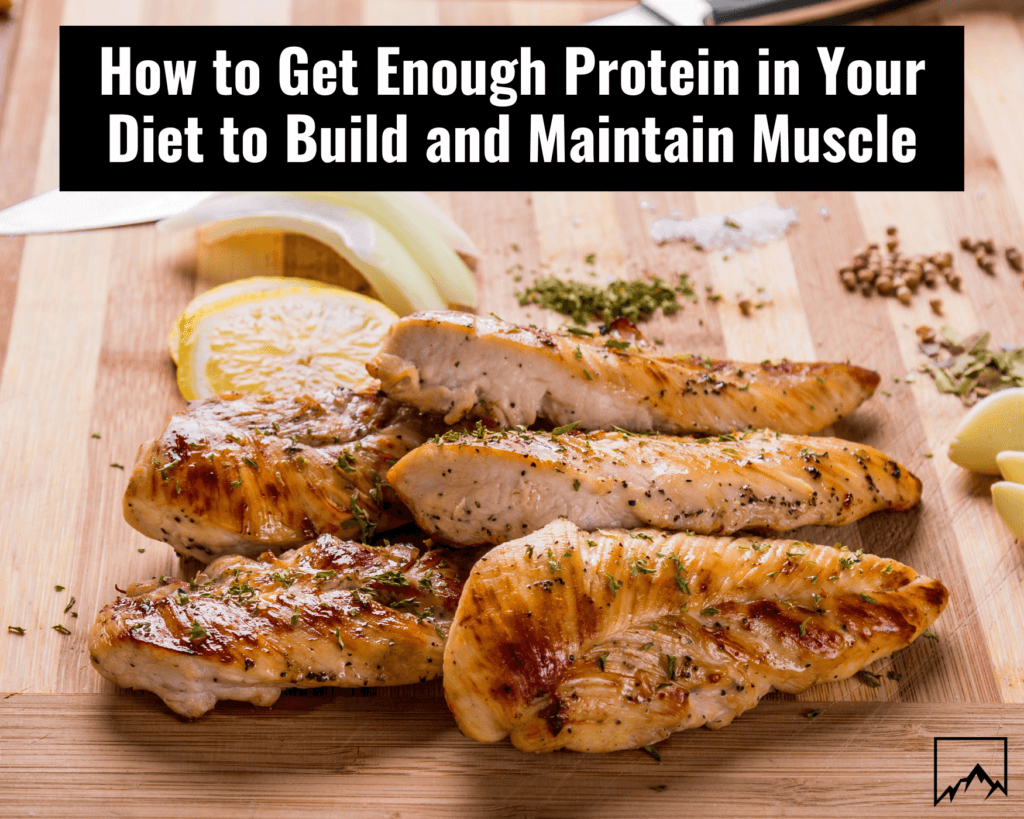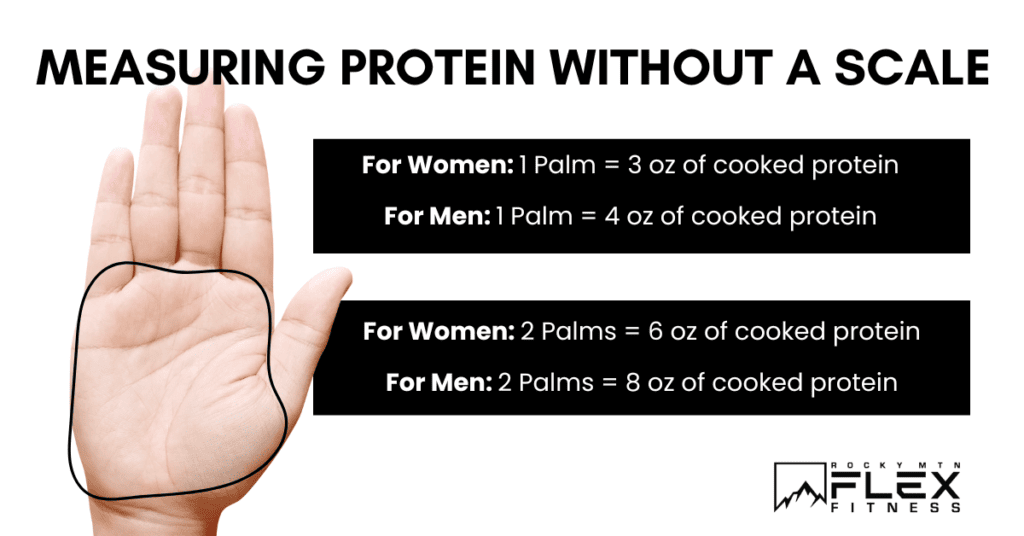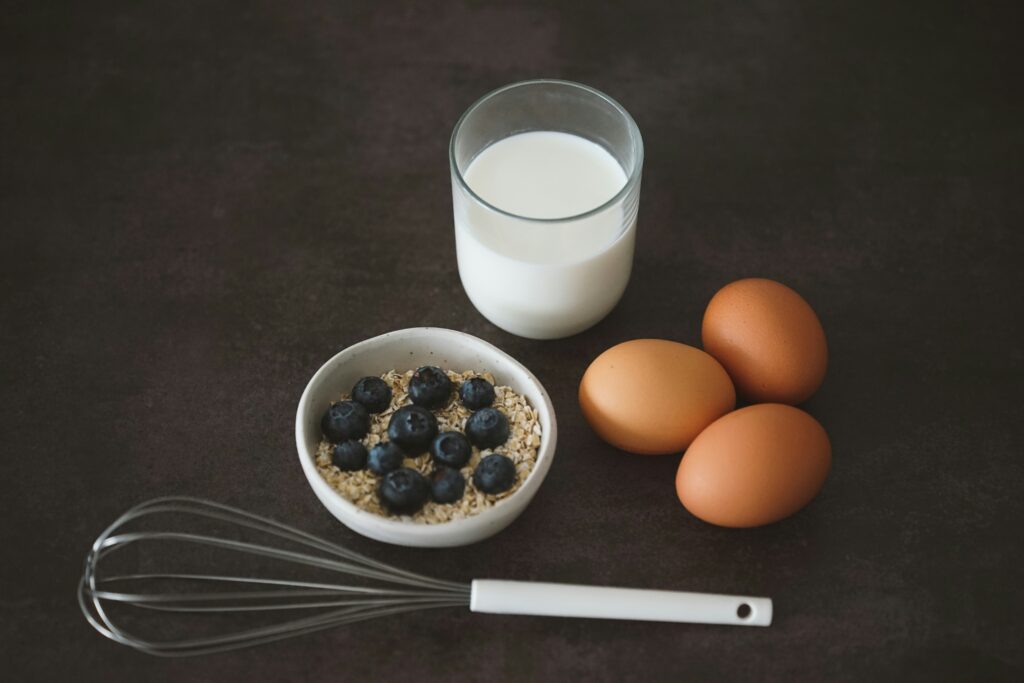In January, we gave a how-to on weekly meal planning and prepping as this practice is one of the most important things you can do to stay on track and reach your fitness goals. When you are trying to dial things in and change your body composition, not many people can do that by just “winging it” with their meals. This is where macro counting comes in.
Protein is a key player in macro counting because it helps you build and maintain muscle yet many people have a hard time with this one macronutrient. It’s easy to overeat fat and carbohydrates because, well, they are delicious.
Getting enough protein in your diet can be a challenge, even for those who are conscientious about their nutrition. If you’re having trouble hitting your protein goals, you’re not alone. But with a bit of effort and the right tools, you can make sure you’re getting the protein your body needs to function at its best. So today we will go over why we need protein plus how to get at least 40g of protein at each meal.
Why is protein so important?
Protein is one of the three main macronutrients, along with carbohydrates and fat, with “macro” indicating that the body needs relatively large amounts of it to maintain lean muscle mass and stay healthy. Unlike fat and carbohydrates, the body lacks a storage facility for protein, requiring a continuous supply.
Proteins are the building blocks of life and are in every cell of your body. You must consume enough protein each day for your body to build and repair tissue. When proteins are digested, they break down into amino acids, which the body utilizes to create proteins that the body can then use. These proteins play vital roles in various bodily functions, including breaking down food, neurotransmitter and hormone production, supporting growth, repairing body tissues, facilitating numerous other essential processes, and being used as an energy source for the body. Protein is also an important component of your bones, muscles, tendons, cartilage, skin, hair, blood, and more. As a bonus, protein exhibits a higher thermic effect than fats and carbohydrates, which means that your body expends more calories digesting, absorbing, and distributing nutrients from protein.
Dietary protein is made up of a chain of 20 amino acids. 9 of the 20 are essential amino acids meaning the body cannot make them on its own and we must get them from quality protein sources in our diet or supplementation. The 9 essential amino acids are histidine, isoleucine, leucine, lysine, methionine, phenylalanine, threonine, tryptophan, and valine. Foods that contain all 9 essential amino acids are called complete proteins these are typically from animal proteins although there are a few plant protein sources included.
The other 11 amino acids are non-essential meaning they can be created by the body. These 11 include alanine, arginine, asparagine, aspartic acid, cysteine, glutamic acid, glutamine, glycine, proline, serine, and tyrosine.

Complete protein sources include:
- Chicken
- Eggs
- Turkey
- Beef
- Pork
- Lamb
- Fish (such as salmon, tuna, and trout)
- Shellfish (like shrimp, crab, lobster, and scallops)
- Dairy products (such as milk, Greek yogurt, cottage cheese and whey protein)
Complete vegetarian protein sources include:
- Quinoa
- Amaranth
- Hemp seed
- Soy (such as tofu, edamame, tempeh, and miso)
- Buckwheat
Incomplete protein sources include:
- Legumes (beans, peas, lentils)
- Nuts
- Seeds
- Whole grains
- Vegetables
*Leucine is the primary driver for muscle growth and is found mainly in complete protein sources, it will be found in much lower concentrations in incomplete plant protein sources.

Eating Enough Protein to Turn On Muscle Protein Synthesis
Muscle catabolism, also known as muscle wasting, occurs when the body is in a catabolic state, breaking down muscle tissue to replenish energy levels. In contrast, an anabolic state is when the body builds and repairs muscle tissue. To achieve an anabolic state, it’s crucial to consume an adequate amount of high-quality protein at the right times. This supports muscle preservation, cell repair, and the creation of new cells.
As an example, when you wake up in the morning from your overnight fast, you are in a catabolic state as protein synthesis has decreased and the mTOR signal molecule is downregulated. You remain in this catabolic state until you consume enough protein to obtain around 3g of the amino acid leucine, which is approximately 30-40 grams of protein for most individuals, which shifts your body into an anabolic state and turns on muscle protein synthesis. A good rule of thumb is if you stay around 40 grams of a complete protein, you will get 3g or more of leucine at each meal.
Eating a high-protein diet is important overall for all the processes stated above, but especially as you age because you now have a much higher protein requirement to maintain muscle mass – mainly because your system is no longer dominated by hormones like when you were in your 20s. As we age, our muscle mass decreases by about 3–8% per decade after reaching age 30. This rate of decrease speeds up even more after turning 60. This natural decline in muscle size, strength, and function is a big reason why older folks can start to have trouble with everyday activities and there is an increase in falls resulting in injury or death. The goal as you age should be to stay active and continue to regularly incorporate weight lifting exercises so you can maximize muscle protein synthesis to preserve lean tissue – over time, it will help with strength, bone health, and other essential functions that keep you mobile and balanced.
You can use the amounts below to achieve your 40g+ of protein per meal.
Beef
- 93% ground beef, 6 oz cooked – 46 grams protein
- 93% ground bison, 6 oz cooked – 46 grams protein
- NY Strip Steak, 6 oz cooked – 50 grams protein
- Flank Steak, 6 oz cooked – 46 grams protein
Chicken and Turkey
- Chicken breast, skinless – 6 oz cooked – 50 grams protein
- Chicken thigh, skinless – 6 oz cooked – 44 grams protein
- Canned chicken breast, Costco – 45 grams protein
- Chicken sausage, Sabatino’s – 1 link – 17 grams protein
- Chicken breast, sliced lunch meat – 8 oz – 44g protein
- Turkey, sliced lunch meat, Applegate – 8 oz – 40 grams protein
Fish
- Cod filet, 6 oz cooked – 40 grams of protein
- Tuna, 5 oz can – 24 grams of protein
- Salmon filet, 5.25 oz cooked– 40g grams of protein
Pork
- Pork chop, 6 oz cooked – 40 grams protein
- Pork loin or tenderloin, 6 oz cooked – 44 grams protein
- Bacon, center cut, 4 slices – 10 grams protein
Eggs and Dairy
(These can be paired together or with other proteins such as Canadian bacon to make a meal with 40g protein)
- 6 whole eggs, large – 36 grams protein
- 3 whole eggs + 9 Tbsps egg whites – 33 grams protein
- Milk, 1 cup – 8 grams protein
- Cottage cheese, small curd – 1 cup – 25 grams protein
- Siggi’s Plain Skyr Yogurt – – ¾ cup, 19 grams protein
* The above ingredients do not account for fat content, you will want to pre-plan your meals and log your macros to understand the fat content for each of these proteins.
Understanding Your Macro Needs
We’ve said it time and time again but before you get started with macro-focused meal planning, you need to understand your body’s unique macronutrient needs. Macros is short for macronutrients and is made up of carbohydrates, proteins, and fats. These are essential components of your diet that provide energy and support all of your bodily functions.
1g of Protein = 4 calories per gram
1g of Carbohydrates = 4 calories per gram
1g of Fat = 9 calories per gram
Determining your macro requirements lays a solid foundation for prepping meals that align with your health and fitness goals. But before you figure out what macro approach you will use to reach your goals, whether that is to build muscle, lose fat, or maintain your current weight, you first need to know how many calories you should consume daily. You can use the pen-and-paper method or you can use a calculator like the one below. With this calculator, you can determine both your calorie target and macro approach based on your height, weight, and goals.
Once you determine how many calories you will need to consume, you can then determine what macro breakdown you will implement. Some common macro breakdowns are:
A balanced approach 40% carbs, 30% protein, 30% fat
High carb 55% carbs, 25% protein, 20% fat
High protein 20% carbs, 50% protein, 30% fat
Low carb keto 5% carbs, 25% protein, 70% fat
Low fat 40% carbs, 40% protein, 20% fat
You might also go a more custom route with your macro percentages after you determine your calorie target. You can start by calculating your protein needs first based on multiplying .8 – 1.2g of protein per 1lb of body weight.
_________ (bodyweight) x .8-1.1 = ___________
Ex:
145 x .8 = 116 g of protein
145 x 1 = 145 g of protein
145 x 1.1 = 159.5 g of protein
Then you can reverse engineer your carbohydrates and fat. If you aren’t sure how to do this a fitness professional may be able to help you determine these numbers.
How to count daily protein amounts in a food logging app:
First download an app such as
You will also want to get an inexpensive food scale to accurately measure your food otherwise you can use the palm measurement to determine how much protein you are consuming. While this method is less accurate, it is still a great tool especially when on the go.

When you look at a nutrition label on a package of uncooked protein such as fish, beef or chicken for example, the label will list the nutrients for the raw version of that food. Most food tracking apps will also show protein content in its raw state unless otherwise specified, making it hard to accurately track protein portions especially since most people measure their food after it has been cooked.
*Cronometer uses both the NCCDB and USDA data sources. The NCCDB amounts for generic food such as chicken are typically listed in their cooked form making it easier to log.
*MyFitnessPal uses the USDA data source so unless stated, the proteins there may be the raw amounts.
To calculate the raw weight from the cooked weight, divide the cooked weight by 0.75 to adjust for a 25% water loss during cooking.
Raw to cooked = Raw Weight x 0.75
This method also works in reverse, if you have the raw weight, you can estimate the cooked weight by multiplying it by 0.75.
Cooked to raw = Cooked Weight / 0.75
Eating high-protein foods requires preparation, and this is where weekly meal prep comes into play. When you prep your meals ahead of time or use a meal prep service like MyFitFoods or Meal Pro, you are in complete control of the foods that go into your body. You have the power to eat in a way that makes you feel energized and healthy and helps you build strong muscles that will shape your physique.















